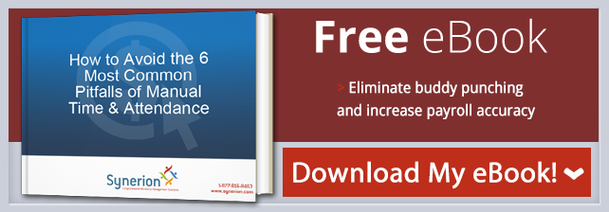
Imagine a Saturday afternoon at a local business. A normal weekend would have four employees manning the store, but this Saturday, there's only a single manager on the floor. You ask the overworked manager what happened. Well, the cashier's child had a baseball game and asked for the time off weeks ago. Yesterday, the stocker remembered she made plans with friends and the manager gave her the time off even though he knew the store would be understaffed. Then, the employee in the back overslept and swore an hour ago that she'd be there in ten minutes. Customers are walking out the door because they either can't find what they want or don't have anyone to check them out.
The workforce scheduling problem has long plagued employers. Companies that implement stringent staffing policies inevitably run understaffed while companies that are more generous are overstaffed. Striking that perfect balance of proper staffing is an ongoing issue for companies relying on managers for scheduling.
Take Out the "Human Factor"
The saying goes that employees don't leave companies, they leave managers. Businesses want their managers to be compassionate yet strict, and staffing is a gray area where even the best managers get tripped up. They give someone a few extra hours despite being properly staffed or run their department understaffed to serve their employees' personal schedules. While allowances are inevitable, managing the workforce schedule problem can be accomplished more easily by automated time and attendance software. Through the automated system, managers know how many employees are needed and can staff accordingly.
Plan By Numbers
Holidays can be a headache for managers. A common workforce scheduling problem involves differentiating slow and busy holiday hours. It takes a manager with years of knowledge to determine that the days leading up to Christmas need double staff but Christmas Eve needs a skeleton crew. Or, it takes automated time & attendance system. Implementing a system that assesses the productivity of the company on holidays can save money and increase employee satisfaction by only staffing the required number of employees based on previous data.
Automated time and attendance systems can also help the workforce scheduling problem by assessing which hours more staff are needed. If business is sluggish in the morning, having full staff in at eight is pointless, especially if the business experiences a push in work at six when there's fewer personnel. Automated time and attendance systems can help plan staffing according to the raw data of a company rather than the historical norm.
Be Lean
Lean manufacturing focuses on taking fewer steps, fewer materials, and fewer staff. To reach optimal productivity, businesses need the right amount of people in the right positions. A workforce scheduling problem can lead to too few or too many people being scheduled which slows productivity. An automated time & attendance software can help your business hit the sweet spot of enough employees for optimal productivity by assessing the productivity of your business.
It's a few months later at that same store. Instead of being greeted by an overworked manager, you find three productive employees. The stocker is quickly taking inventory from the back room and moving it to the shelves, the cashier is cheerily chatting with customers, and the manager is alternating between his office and the second register. After implementing an automated time and attendance system, the corporate office found that they were overstaffing on weekends. By eliminating one position on the weekend, the employees could rotate weekends off. The manager cites less stress overall and fewer unscheduled absences. All thanks to an automated time and attendance system.
